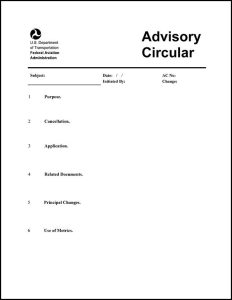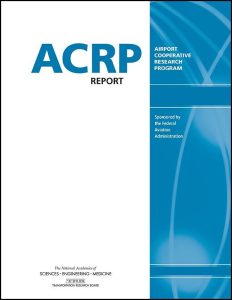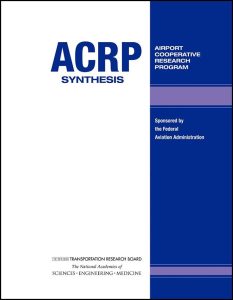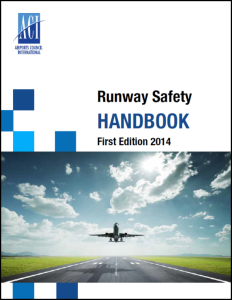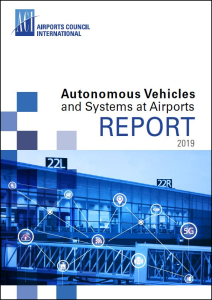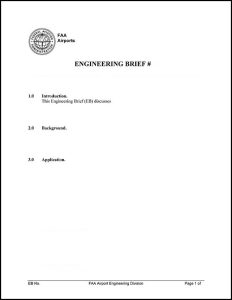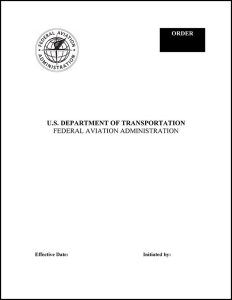To narrow the library of airside resources, use the filter boxes or airport map below or search box above.
Click an item below to expand.
Resources Matching Your Search
2020
This document provides a comprehensive guide to safe driving on the airport surface. It was created for drivers of tugs, fuel trucks, baggage carts, or other airport vehicles. It focuses on five areas—airport basics; airfield signs, markings and lighting; towered airports; non-towered airports; and aviation phraseology.
2021
This resource is a webpage that provides information on the Electronic Code of Federal Regulations (e-CFR) Title 14, Chapter I, Subchapter G, Part 139, which contains guidance on certification, airport certification manual, and operations.
2015
This advisory circular (AC) and its appendices provide guidance to airport operators about developing training programs for safe ground vehicle operations, personnel taxiing or towing an aircraft, and pedestrian control on the movement and safety areas of an airport. This version represents a major rewrite.
2017
This advisory circular (AC) sets forth guidelines for operational safety in airports during construction. This AC assists airport operators in complying with Title 14 Code of Federal Regulations (CFR) Part 139, Certification of Airports. For those certificated airports, this AC provides one way, but not the only way, of meeting those requirements. The use of this AC is mandatory for those airport construction projects receiving funds under the Airport Improvement Program (AIP). Chapters include planning an airfield construction project, construction safety phasing plans (CSPP), and guidelines for writing a CSPP. Included in the appendices are a safety and phasing checklist and a construction project daily safety inspection checklist.
2015
The purpose of the ACI Apron Safety Handbook was to update and expand Chapter 2 of the Airside Safety Handbook (fourth edition). Aprons are the most congested and busiest areas of an airport, with complex activities that are carried out under severe space and time constraints. This handbook provides best practices for planning and designing apron layouts and facilities. It also provides standard operational practices for safe apron operations as well as mitigation and prevention measures for maintenance and construction activities on aprons. This resource is available from the ACI store for $125 for members and $1,000 for non-members.
2020
ACRP Research Report 219 identifies potential advanced ground vehicle technologies for application on the airside. Ten applications were evaluated for airside operations using a number of criteria. This report will assist airport staff or other airport stakeholders beginning to prepare for the integration of these technologies.
2008
ACRP Synthesis 12 examines factors affecting safe winter operations and the prevention of runway incursions by airport snow removal equipment operators.
2011
ACRP Synthesis 29 addresses the current state of ground-handling practices, focusing on safety measures and training. Issues addressed in the report include ramp safety operations, staff roles and responsibilities, safety training, audit and inspection programs, safety violation programs, and collaborative safety initiatives, such as foreign object debris programs.
2010
This advisory circular (AC) provides guidance, specifications, and standards for painting, marking, and lighting of vehicles operating in the airport air operations area (AOA). The approved lights, colors, and markings herein ensure the conspicuity of vehicles operating in the AOA from the ground and the air.
2019
ACRP Report 16, second edition, is designed to help airport practitioners, owners, operators, managers, and policymakers of small airports, who may have varying degrees of experience and backgrounds, to fulfill their responsibilities in such areas as financial management, oversight of contracts and leases, safety and security, noise impacts, community relations, compliance with federal and state obligations, facility maintenance, and capital improvements. The first edition has been edited and reformatted for currency, relevance, and usability and updated with additional information and new subject areas (e.g., unmanned aircraft systems, geographic information systems, digital notices to airmen, social media, and federal and state obligations). Also, hyperlinks to many of the documents and resources mentioned in this report, such as ACRP publications, industry sources, and sample checklists, have been collected into ACRP WebResource 6: Resources for Managing Small Airports.
2014
Runway Safety Handbook provides methodologies and best practices that can be implemented to help airport operators achieve a state-of-the-art level of runway safety. It provides guidance material for the development of runway safety programs for all airports (large or small) as well as ways to tailor, improve, and expand existing programs. This resource is available from the ACI store for $125 for members and $1,000 for non-members.
2009
ACRP Synthesis 15 explores information on the requirements and training required to obtain driving privileges on airport airfields and the differences and similarities among the various airports throughout the country. The report also examines information on the types of training programs available to airport employees based on where the employees were authorized to drive.
2019
This report explores the application of autonomous vehicles and systems at airports and provides insights into the outcomes of trials and applications. It also explores the reasons why airports should think of adopting these solutions and what to take into consideration when doing so. This is a free resource, but it requires a free ACI account.
2017
Engineering Brief (EB) 93 provides guidance about materials, methods of assembly, and the installation of temporary orange construction signs.
2004
This order establishes procedures for and information on conducting investigations of vehicle/pedestrian deviations and on completing FAA Form 8020-25, Investigation of Vehicle or Pedestrian Deviation (V/PD) Report.
2019
Airports in the United States are responding to the demand for increased air travel with sustainable development that incorporates more energy-efficient and lower-emission technologies. The funding for greenhouse gas (GHG) emissions-reducing technologies, such as electrification, alternative fuels, and renewable energy, has also become more accessible as technologies are proven to be safe, reliable, and cost-effective. ACRP Synthesis 100 assesses the state of practice of GHG emissions-reduction initiatives at airports and the lessons learned to support the successful implementation of future GHG reduction projects.
2020
Managers of airports of all sizes face a perennial dilemma: how to efficiently train operations personnel to meet Title 14 Code of Federal Regulations Part 139 requirements and ensure a safe and secure airport environment. ACRP Synthesis 112 focuses on airport operations employees and aims to better understand current training methods and programs in use by small airports in the United States (including non-hub, non-primary commercial service, reliever, and general aviation) to initially and recurrently train airport operations employees.
2013
ACRP Synthesis 49 highlights comprehensive safety and security training resources as well as successful practices for new maintenance hires at general aviation airports. The objectives are to locate information on training new hires, identify current practices and challenges, document core training elements and resources, and identify resources that may help raise knowledge and understanding on the airport campus and its operating environment.
2019
This advisory circular (AC) provides a performance specification for airport vehicle runway incursion warning systems (RIWS). This AC does not constitute a regulation and is not legally binding in its own right. It will not be relied upon as a separate basis by the FAA for affirmative enforcement action or other administrative penalty.
2016
This advisory circular (AC) provides guidance on the development, installation, testing, approval, and maintenance of Automatic Dependent Surveillance-Broadcast (ADS-B) Out squitter units for airport ground vehicles. Using this AC, airports will be able to acquire approved and authorized airport ground vehicle ADS-B squitter units that are compliant with Title 14 Code of Federal Regulations (CFR), Part 91, Automatic Dependent Surveillance-Broadcast (ADS-B) Out Performance Requirements to Support Air Traffic Control (ATC) Service, as well as the initial set of ADS-B applications. Please note that the technical specifications for manufacturing ADS-B squitter units for airport ground vehicles are published in the FAA's document, FAA-E-3032, Vehicle Automatic Dependent Surveillance Broadcast (ADS-B) Specification, published January 7, 2015.


